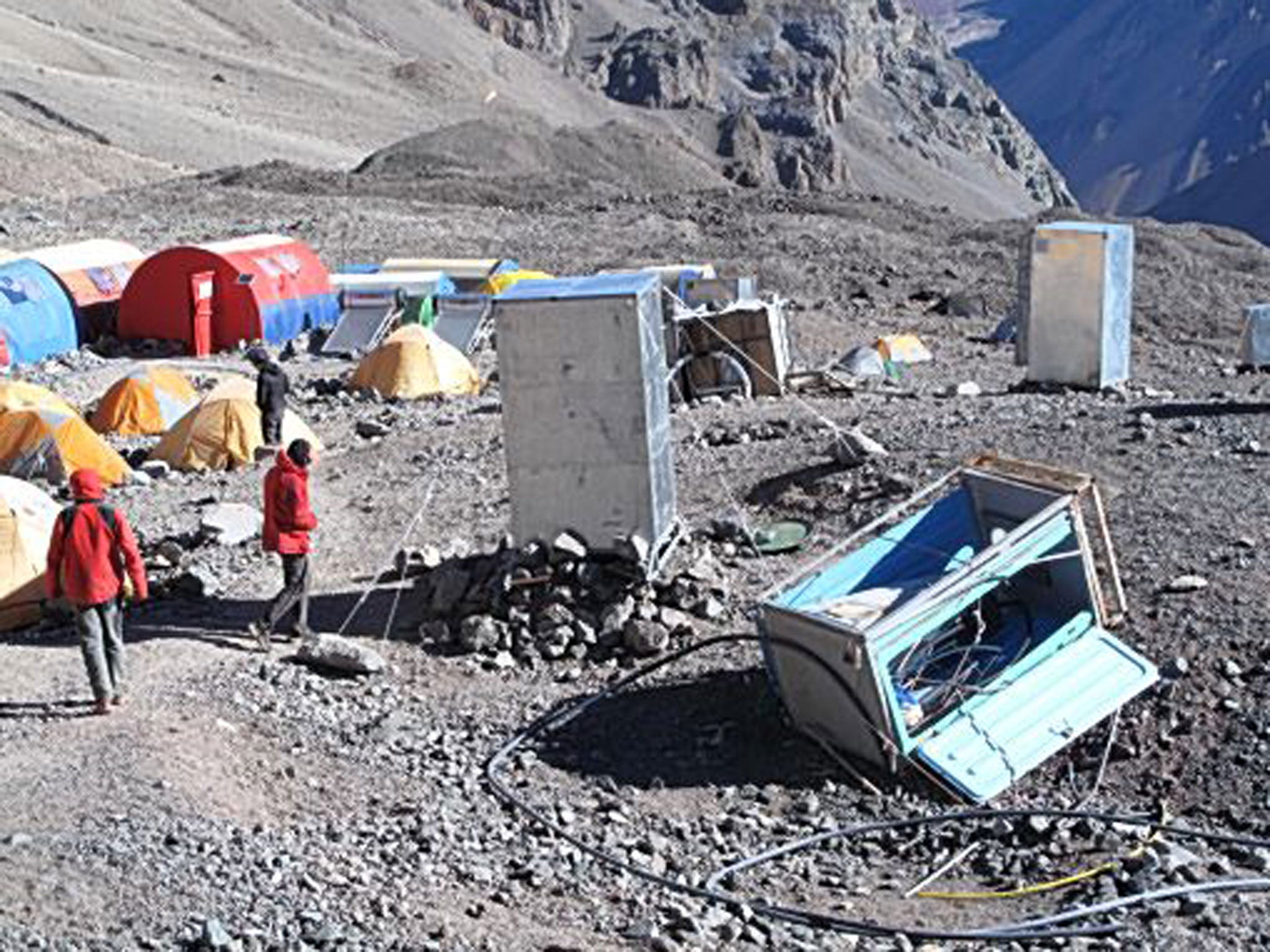Simon Calder: 48 Hours in Base Camp
The man who pays his way

The conceit of our "48 Hours" city-break series, which celebrates its quarter-century this year, is to prescribe a sequence of activities for a happy weekend away. The template is designed for cities with a wealth of cultural and culinary attractions, such as York. But how low can you go; what is the smallest community for which the format still works? At Base Camp for Aconcagua – the Americas' highest mountain – I had plenty of time to find out. Over New Year, I spent five days in Argentina living amid squalor at 14,000ft as I sought to acclimatise in a wintry, overcrowded no-man's land.
Why go now?: To appreciate the place you have left behind. Every serious mountain needs a base camp, where climbers adjust to a higher altitude and prepare for the journey ahead. But the only thing that unites the several hundred people who are at Aconcagua Base Camp at any one time is a desire to be somewhere else: either climbing to the summit, or descending to the prevailing high summer at lower altitudes.
Touch down: A simple choice – walk 16 miles from the highway (possibly with a night's camping); pay US$300 for a ride on an ill-tempered mule; or $1,700 for a helicopter transfer.
Get your bearings: The heliport marks the southern boundary of Base Camp, which straggles north across a barren hillside. Each adventure company has its own slice of the action: Inka is downtown, Aymara mid-town, Fernando Grajales uptown. Around their larger marquees spread suburbs of tents, with independent trekkers and climbers on the outskirts.
Check in: Stony ground; the highest hotel in the world stands across the valley, but has been boarded up for years. So settle for canvas. The basic price for a night in a tent, $30, buys a thin mattress. You could instead pitch a tent free of charge, or ask porters to erect it for $40.
Take a hike: Any stroll around town takes you into close proximity to the sanitary arrangements. Solar-powered showers comprise the highlights; long-drop latrines destroyed in the previous night's storm are the lowlights.
Take a view: That's the general idea here. The climb to Camp Canada takes about three hours, hoists you 2,000ft nearer the peak, and gives an excellent panorama of Base Camp and beyond.
Climbing Aconcagua
Show all 6Cultural afternoon: Artist Miguel Doura, from Buenos Aires, has established the world's highest art gallery in his marquee. Admission is free, the art is not: a bright, brash canvas of Aconcagua is yours for a couple of hundred dollars.
An aperitif: Next door, a full-scale bar-restaurant has prices to rival the chintziest venues in the capital. A beer and a pizza? Reckon on £20.
Dining with the locals: The adventure companies provide meals for $39 per person per day: with soup, meat and veg, and some sweet, sticky substance constituting dessert.
Day two
Sunday morning, go to the doctor: The mountain gods have their own ideas about whether you'll make the summit, but even they can be overruled by the mandatory health check on all would-be climbers. The doctor will take your blood pressure, measure the saturation of oxygen in your blood and demand intimate details of the workings of your gastric system before signing to permits that allows you to ascend.
A walk in the park: The nearest park of note is back down on the highway: the sombre Cemetery of the Andinistas, populated by many who lost their lives on Aconcagua. Closer to Base Camp, you are unlikely to see wildlife, but you may see wild-dead in the contorted shape of a guanaco skeleton, picked clean by condors.
Out to brunch: See lunch and dinner, repeat ad nauseum. Note the weather forecast, pinned to the kitchen tent wall; this holds the key to your mission. You need low wind speeds on the summit day, no faster than 30mph.
Icing on the cake: While the rest of the world awaits your return, you can communicate with it either by satellite phone ($3 a minute), or the slowest internet connection on the planet ($1 a minute). But in the Andes, as elsewhere, no news is normally good news.
Travel essentials
Usually when packing for a trip the mantra "half the clothes, twice the money" works well; but for a reasonably extreme mountain such as Aconcagua, it becomes "twice the clothes, twice the money". This is not a budget holiday. The peak-season ticket on BA's longest non-stop flight from Heathrow (outbound to Buenos Aires) and Iberia's longest non-stop flight (from Santiago back to Madrid) was just the thin end of a very expensive wedge.
A good way to vary the Base Camp diet is to take a picnic – and, in the course of organising it, you meet some of the fascinating characters inhabiting Planet High-Altitude. Chris Frizelle, owner of Outdoor Grub, personally tastes each variety of dehydrated meal before selling it from his warehouse in South-east London, for a fiver each. We needed 39 – there goes another £200.
High-altitude insurance from the British Mountaineering Council costs £7 a day. Mind you, I was lucky to be sold a policy at all, given my flaky answers to the pre-departure questionnaire: "Please summarise your knowledge of the area you intend to visit." Er, none. "Summarise your experience relevant to your mountaineering objective." Ditto. At least I could answer "no" to: "Have you had any previous Search and Rescue, Medical Emergency or Repatriation incidents?" You tend not to need them in York.
Subscribe to Independent Premium to bookmark this article
Want to bookmark your favourite articles and stories to read or reference later? Start your Independent Premium subscription today.

Join our commenting forum
Join thought-provoking conversations, follow other Independent readers and see their replies